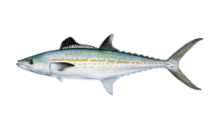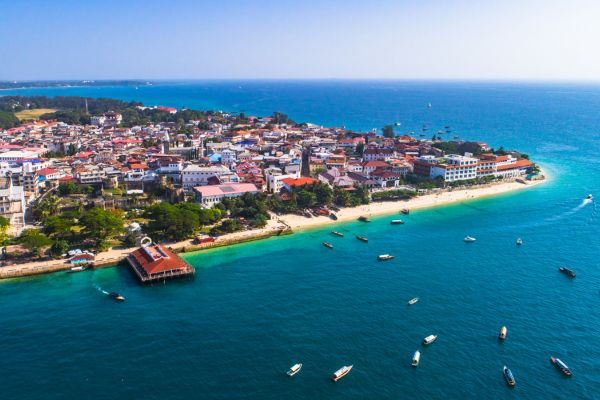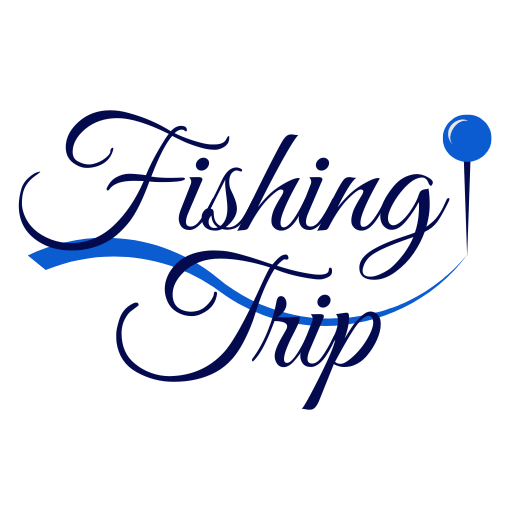Habitat and Distribution
The Cero Mackerel, part of the Scombridae family, thrives in the warm, tropical, and subtropical waters of the Western Atlantic Ocean. They are commonly found along the coasts of Florida, the Bahamas, and throughout the Caribbean. These fish often swim in small schools, especially in shallow coastal waters and around coral reefs. During the summer, they migrate to warmer waters, while in winter, they move to deeper areas.
Species Characteristics
Cero Mackerel are pelagic fish known for their streamlined bodies and sharp teeth. They can grow up to 24 inches (60 cm) in length, although they are more commonly between 12-20 inches (30-50 cm). Their silver bellies and blue-green backs, adorned with distinctive yellow stripes, provide excellent camouflage in the ocean. Their sleek bodies make them incredibly fast swimmers, perfectly suited for chasing down prey.
Behavior and Feeding
Cero Mackerel are predatory fish that primarily feed on smaller fish such as sardines, herring, and shrimp. They often hunt near the surface, working together in schools to catch their prey. Their hunting behavior is a spectacular sight, especially when a group of Cero Mackerel moves in unison to feed. In spring and summer, they migrate to shallow coastal waters, taking advantage of the abundant food supply.
Reproduction
Cero Mackerel spawn in late spring and early summer when water temperatures are between 70-75 degrees Fahrenheit (21-24°C). Females can release thousands of eggs at a time, which float freely in open water until they hatch. Juvenile mackerel remain in coastal waters until they are large enough to join adult schools in the open sea.
Fishing Techniques for Cero Mackerel
Cero Mackerel are prized for both commercial and recreational fishing, thanks to their strong fight and delicious flesh. Anglers often use light tackle with fresh bait or artificial lures like feathers or small metal spoons. The best fishing season for Cero Mackerel is during the warmer months. While they can be caught from the shore, fishing from a boat near rocky coastlines or in areas with strong currents is often more effective.
Fishing Tips:
Fishing Techniques:
Ideal Conditions: Cero Mackerel are more likely to bite in calm, warm weather, especially on humid summer days. These conditions make it easier for anglers to target them near the shore or out in deeper waters.
Location: Focus on rocky shorelines with deep water and slopes covered in algae, where small baitfish gather. These spots attract Cero Mackerel looking for food.
Chumming: Lightly scatter crushed bait like sardines, anchovies, or small pieces of mackerel to draw the Cero Mackerel closer. This helps create a scent trail that leads them to your fishing spot.
Bait: Cero Mackerel prefer small pieces of fish flesh. Natural baits like sardines work well, especially when combined with the chumming technique.
Lures: When casting from shore, use light lures between 15 to 25 grams. These mimic small baitfish and are effective in attracting Cero Mackerel.
Boat fishing is a popular and effective method for targeting Cero Mackerel, as it allows access to deeper waters where these fish typically gather in schools. Larger charter boats often use a “paternoster rig” or feather rig, which involves multiple hooks dressed with feathers or shiny materials to lure in the mackerel. Jigging this rig up and down helps attract their attention.
Once you feel a bite, wait a few seconds before reeling in, as Cero Mackerel often swim in schools, and you can hook multiple fish at once. To save time, mark your fishing line at the depth where the bites are coming, so you can quickly return to the right spot without unnecessary searching.
For a more thrilling experience, anglers on smaller boats may prefer using light spinning tackle or fly rods. This adds an element of sport, as Cero Mackerel put up a strong fight when hooked on lighter gear.
Chumming: Chumming is an essential technique for boat fishing, especially when searching for schools of Cero Mackerel in open water. By regularly dispersing ground-up fish parts or bait, you create a scent trail that attracts mackerel towards your boat. This is especially useful in areas like the North Atlantic, where mackerel are often spread out.
Once the mackerel are drawn in by the scent, anglers can cast feather rigs, lures, or lightweight leaders with a single hook directly into the chummed area for a higher chance of a successful catch.
If fishing from a boat or pier, use a landing net to scoop the mackerel out of the water. Ensure the net is large enough to handle the size of the fish.
If you’re fishing from a boat and the mackerel is close to the surface, lifting it directly out of the water might be possible.





